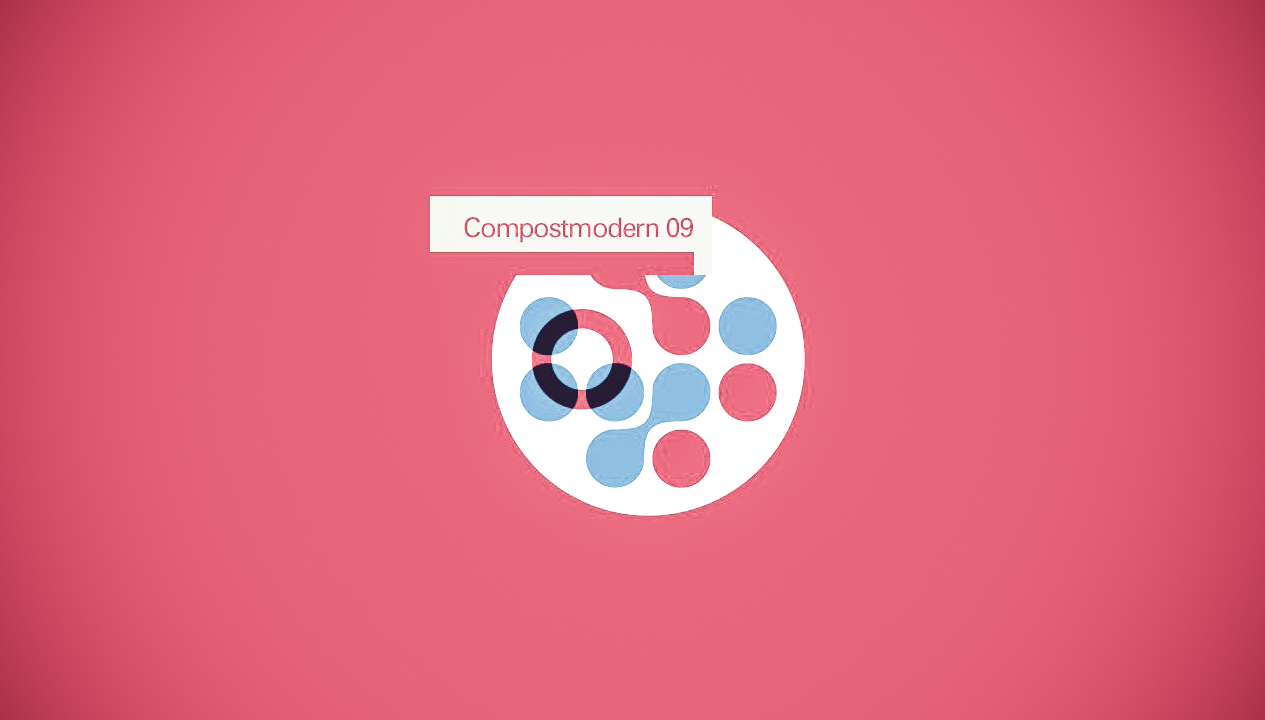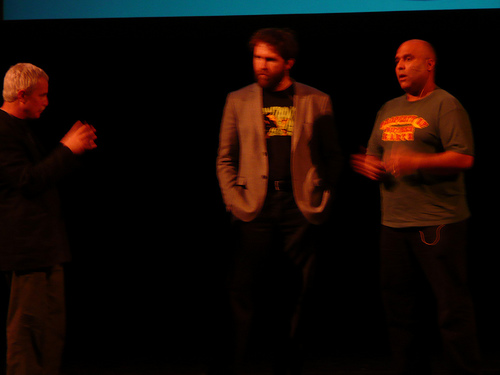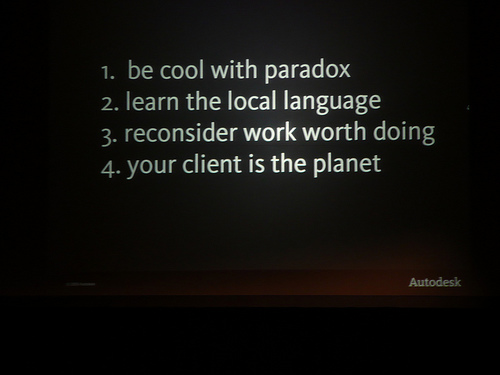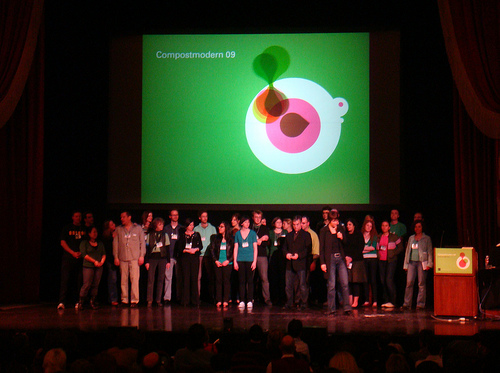Earlier this year I approached Designmatters with an interest in attending Compostmodern, a one-day conference in San Francisco built around the topics of Sustainability, Design, and Business. With the support of Designmatters, I was able to attend the event along with fellow student Yana Kramskaya, which overall helped me gain an idea of what the conversation was like surrounding these increasingly relevant and interwoven fields.
Compostmodern 2009 took place on Saturday, February 21st, in San Francisco’s historic Herbst Theater, and was presented by the San Francisco chapter of AIGA + the AIGA Center for Sustainable Design (CFSD). Though the attendees I met varied in background (there were folks in design, technology, education, and business) this was the first Sustainability-focused conference I have attended where the audience primarily consisted of design professionals and design students—This in itself was incredibly refreshing! For the first time, with only a few exceptions, the speakers were actually able to present case studies and talk about their personal experience, instead of focusing on explaining the “why’s” (why we need to care about this stuff in the first place), the conference was more about design field-specific solutions than anything else.
After an introduction to the event, and a special note of support from SF’s Mayor’s office, we started with a talk by Eames Demetrios, grandson of Charles and Ray Eames (www.eamesgallery.com), who introduced the audience to new ways of thinking about creativity, and the concept of “scale [as] the new geography“, this being the new important literacy, as advocated by his grandparents before him. He also argued that in order to do better and more profound work, designers should step outside of their comfort zone, into the weird, sometimes into the techy, for example understanding how solar cells actually work: perhaps by doing this, designers could offer up a fresh and valuable set of improvements?
Following Eames Demetrios, there was a superb talk by Allan Chochinov, editor-in-chief at Core 77, and design educator. Allan introduced us to his “10 Steps for Sustainable Design,” and used examples from the graduate I.D. class at Pratt to support these “steps.” Treehugger has a full list up here. Notables: Number four “Surround yourself with the awesomest people you can,” speaks to the idea that you need to have people who inspire you to the point of dumbfounded-ness, and number ten, “Talk to anyone who will listen,” reminds us that a lot of the ideas that we may originally perceive as too out there, will be interesting and worthwhile to SOMEONE out there, so we need to find those people who are willing to listen! Also, I really appreciated Allan’s reply to the Q&A question of how to handle a situation where a client does not care about sustainability. Allan talked about the idea that clients rarely even know what they need. Sustainable design should just be DONE by the designer, clients can always be convinced, and, “You have a moral responsibility as someone who designs mass produced objects.”
Some additional notes:
-Inventor and MacArthur fellow, Saul Griffith, talked to us both about how vast the problems really are in regard to Climate Change, and also the idea that this is “an aesthetic design problem,” because we are choosing our lifestyle “aesthetic.” Saul advocated for making energy use more visible, for a shared economy (sharing especially things we use rarely, a fishing boat for example), and a stop to the obsession with the new. Noteworthy quote: “The planet is the client, the client is not the client.”
-Jon Bialenberg and Pam Door of Rural Studio and Project M talked about their amazing social-humanitarian design projects. They reminded us to “think wrong,” that, “designers may be clever, but not wise,” advocated for the abandonment of the egoist, the importance of the synthesist, and basically that designers need to be willing to “lose our specialness.” I agree.
–Dawn Danby of Autodesk brought up her concern about the design field’s failure to properly garner and use research, statistics, math, aka DATA. She reminded us of the importance of “hacking,” or retrofitting–using what we’ve got as raw material. Dawn also encouraged us all to reconsider the work we are doing and what types of processes we are using: We’ve been trained to think about what we can cut out of a whole sheet of material, and not think too much about the excess, that design mindset needs to be refreshed.
-Emily Pilloton, 26-year old SAIC graduate and founder of Project H Design wowed (and maybe intimidated, just a little bit), with her stories about the various far-reaching social and humanitarian projects she has been involved in and created in just the past year. She reminded us that we need to stop talking, start doing, and that all it took for her to get started were some good ideas, a really large list of email addresses, and 400 dollars in the bank account.
All of the presenters had something valuable to contribute, but I’ve only reviewed in detail those that stuck out to me the most. Overall, I found this a really inspiring set of speakers and well-organized event (no watter bottles, hooray!). As a design student particularly interested in the integration of Sustainability principles into my work, and into the world of design at large, attending this conference was a great opportunity to hear about the plights and successes of designers interested in the intersection of Design and Sustainability. And again, the “tone” of the event was so much more interesting than what I’m used to, a specific focus on the field of DESIGN in relation to social issues, and the discussion centered on coming to solutions, giving the audience practical steps to improve their own practice. These were the elements that I really found most valuable, and are the ones that I would like to work on incorporating into my studies, my practice, and into the Art Center community at large.
I’m very thankful to Designmatters for the opportunity to attend, I defiintely plan to go again next year, and I encourage anyone who is interested to check out their site for information and updates (they plan to have all the footage up from this year’s conference eventually). To visit Compostmodern click HERE.





